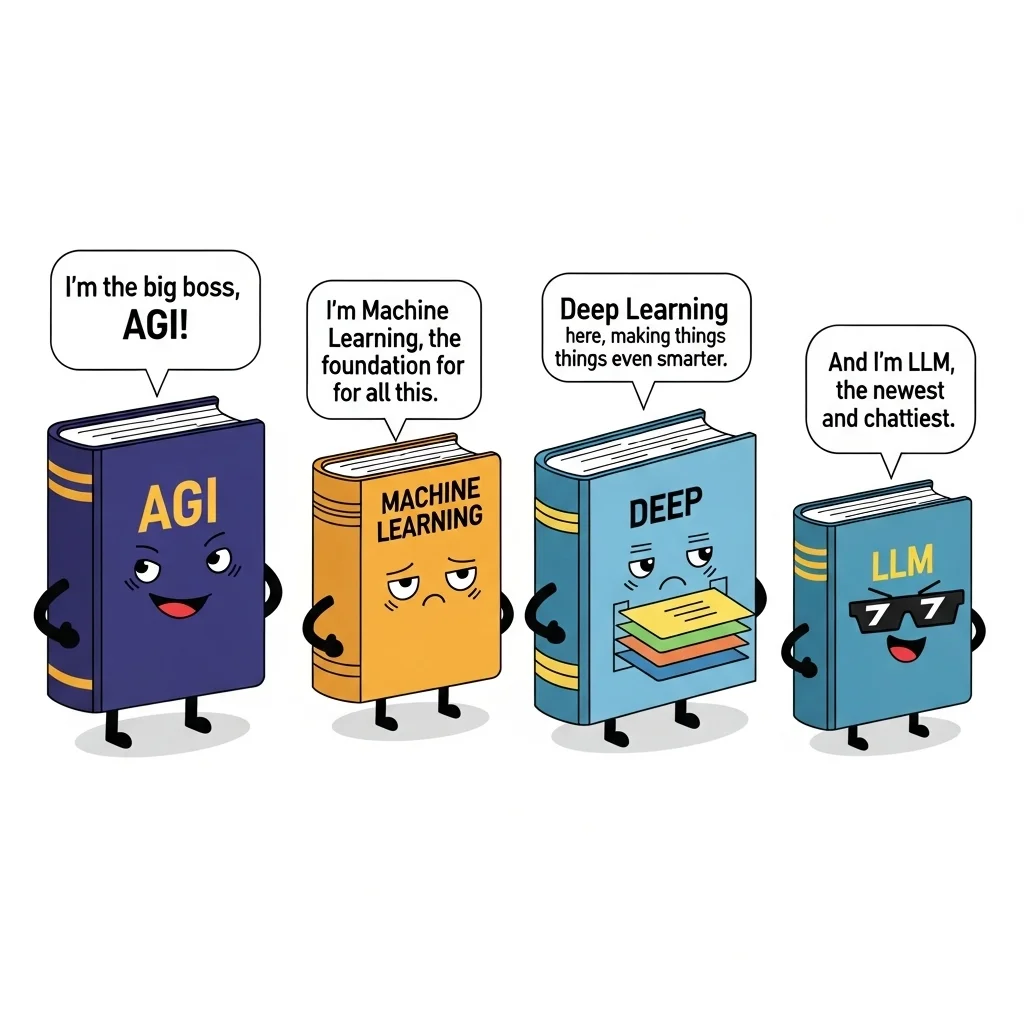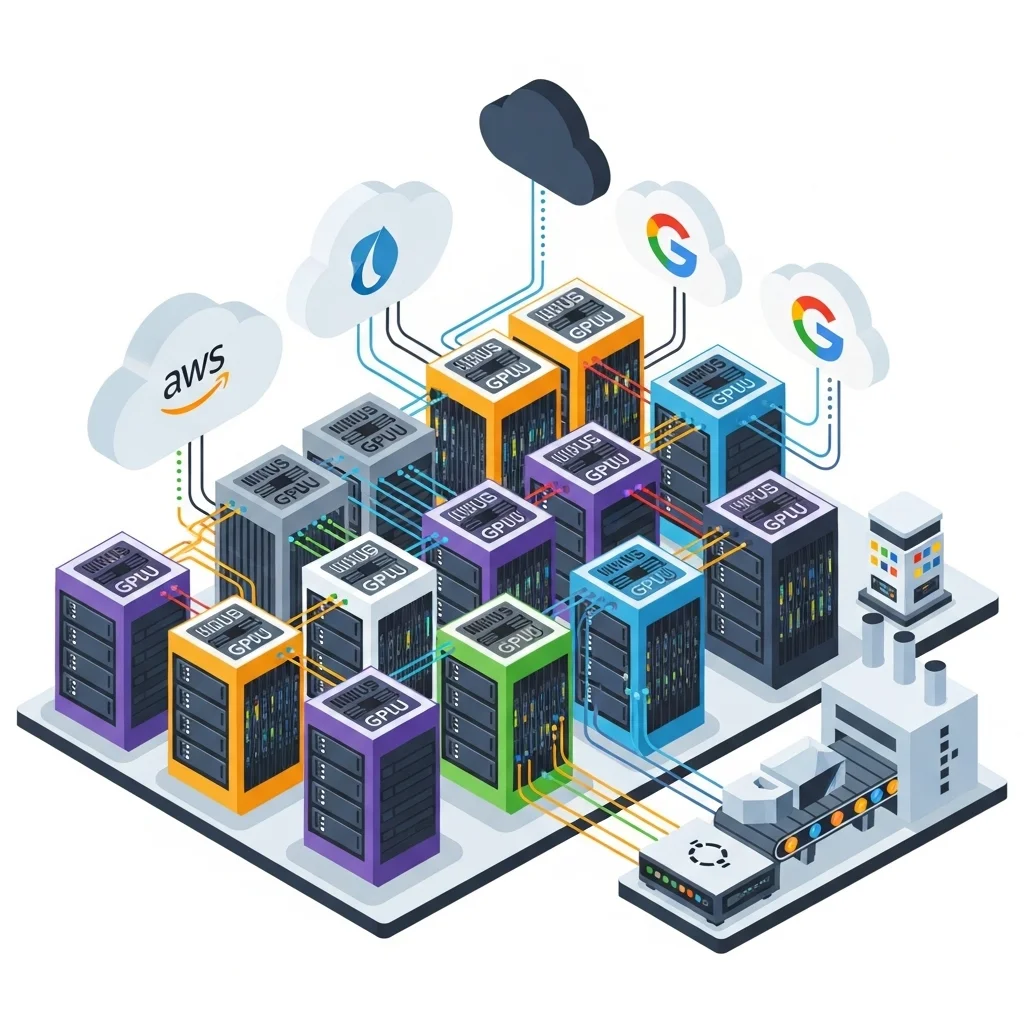Overview
Artificial intelligence (AI) is the discipline focused on designing systems that carry out tasks that would normally require human intelligence, such as reasoning, learning, planning and perception. Thanks to increasing computing power, vast datasets and advanced algorithms, AI is evolving into a general-purpose technology that is affecting virtually every sector.
Definitions and key concepts
Artificial General Intelligence (AGI): A hypothetical form of AI that masters multiple domains and can autonomously adapt to unfamiliar situations.
Machine Learning (ML): Collective term for algorithms that recognise patterns in data and learn from them without explicit rules. Major subcategories are supervised, unsupervised and reinforcement learning.
Deep Learning: A subfield of ML that uses neural networks with many layers. Thanks to GPU acceleration, complex tasks such as image and speech recognition can be performed accurately.
Large Language Model (LLM): A neural network with hundreds of billions of parameters that can generate and understand natural language. Examples: GPT-5 (OpenAI, preview 2025), Gemini 2.5 (Google) and Claude Opus 4.1 (Anthropic).

Technologies
1. Data foundations
Effective AI solutions rely on structured, representative and up-to-date data. Data governance, annotation and privacy protection are preconditions for successful implementation.
2. Modelling
Models range from decision trees to transformer-based architectures. Selection criteria include accuracy, explainability, cost and latency.
3. Infrastructure
Cloud providers (AWS, Azure, Google Cloud) offer specialised AI services, including GPU clusters and optimised chips (TPU v5e, NVIDIA H200). For on-premises deployments, open-source models (Llama 4, DeepSeek) are gaining ground because of data control.

4. Integration
Edge computing enables real-time inference in industrial environments. API abstractions such as ONNX speed up deployment across heterogeneous hardware.
Business applications
Sector | Example Application |
|---|---|
Healthcare | Image interpretation in radiology |
Finance | Fraud prevention on transaction data |
Industry | Predictive maintenance of machines |
Retail | Personalised product recommendations |
Government | Text analysis in legislative research |
Recent developments (Q4 2025)
OpenAI announced the public preview of GPT-5 Codex on 30 September 2025, aimed at autonomous software agents. Source: OpenAI news blog.
Google introduced Gemini 2.5 with multimodal functionality (text, image, video) and improved token efficiency. Source: Google Cloud Next session report, 2 October 2025.
The European Council approved the final text of the EU AI Act, placing high-risk systems under stricter reporting requirements. Source: EU Council Press Release, 6 October 2025.
NVIDIA released the H200 GPU, featuring HBM3e memory for longer context lengths in LLM training. Source: NVIDIA newsroom, 1 October 2025.
Opportunities and risks
Opportunities
Efficiency gains through task automation
New products and services based on generative AI
Improved decision-making through predictive analytics
Risks
Bias in training data can lead to discrimination
Insufficient explainability limits stakeholder trust
Growing energy demand for model training
Legal liability for erroneous output

Regulations and standards
EU AI Act: classifies AI applications into prohibited, high, limited and minimal risk.
ISO/IEC 42001 (2025): management system for AI, comparable with ISO 27001.
NIS2 Directive: mandates stricter cybersecurity measures for critical organisations, including AI vendors.
Implementation best practices
Start with a feasibility study to validate data quality and business value.
Implement a model governance structure that tracks versions, biases and performance metrics.
Embed AI ethics principles (transparency, fairness, privacy) into the development cycle.
Continuously monitor models for degradation and adjust policies according to the AI risk framework.
Sources and further reading
OpenAI Research Index (GPT-5 preview): https://openai.com/research
Google DeepMind Gemini 2.5 whitepaper: https://deepmind.google/papers
EU Council Press Release on AI Act: https://www.consilium.europa.eu/en/press
NVIDIA H200 product page: https://www.nvidia.com/en-us/data-center/h200
ISO/IEC 42001 draft: https://committee.iso.org/home/tc309
This knowledge base page offers a current, business-oriented introduction to artificial intelligence and serves as a springboard for further exploration of policy, technology and practical applications.
